What’s the value in this article?
This article will attempt to show you the perfect merging of Japanese culture and American entertainment. I recently made a mid-winter (not recommended) trip to DisneySea in Tokyo. I thought it was going to be just a full-out American style place but was pleasantly surprised to see that they had actually incorporated some Japanese culture into their products.
Here-on, I’ll show you some of those things and who knows, maybe you’ll get a bit of a culture lesson all the while.
*Note: Most of these images were taken on my iPhone so please excuse the blurriness or graininess.
Bodhidharma and the Japanese Daruma
In Japan, it’s very common to purchase a paper mache “dharma” doll. Going forward, we’ll refer to it as a “daruma” (達磨) as that’s how the Japanese allude to it.
The dharma is based off of an old Buddhist monk who symbolizes luck and longevity. Every year, the Japanese will buy a new daruma and have the previous year’s daruma burned. This will grant luck in the coming year. The daruma’s eyebrows are designed to represent a crane while the cheek design is a tortoise. Reason being, they both imply longevity.
A Traditional Japanese Daruma
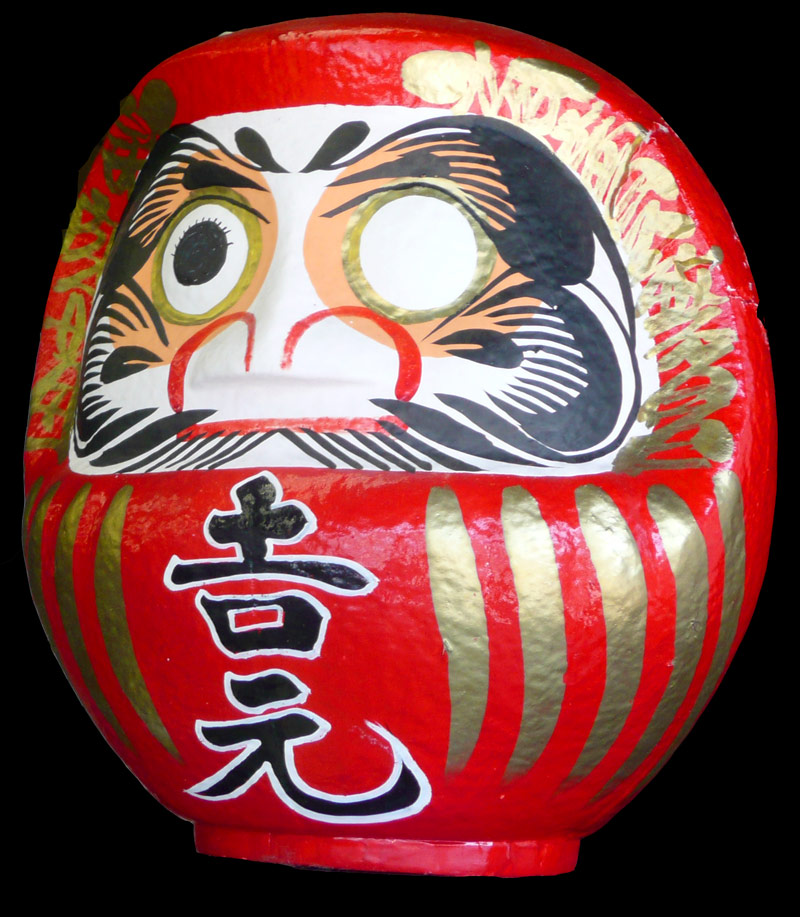
Disney incorporated the traditional daruma by creating a Mickey and Minnie version of it! You can see that they tried to incorporate three elements from the original daruma:
- The basic red daruma shape
- The crane symbolism in the eyebrows
- The tortoise half shell on the cheeks
Daruma-motifed Disney Dessert Plate
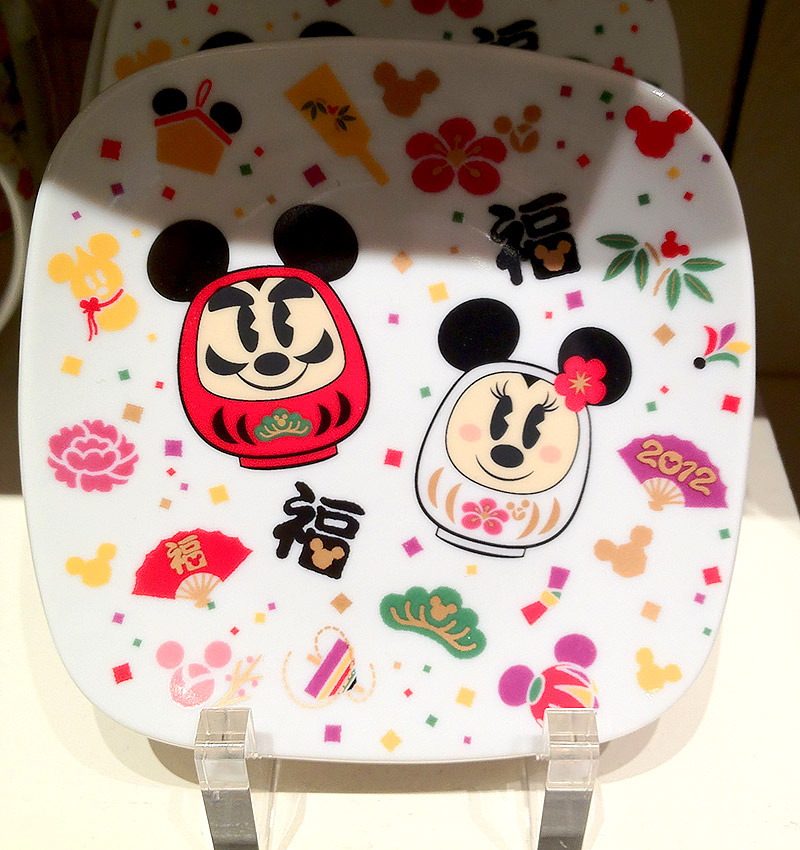
On the above image, you can also see a Japanese character beneath Mickey and one more above Minnie. That character is “fuku” (福) and it means, in connection with the daruma, luck. Ironically enough, it’s also the same “fuku” that appears in the recently-afflicted area of Fukushima which means “lucky island”.
The following image is that of a popcorn basket that guests at the park can purchase, carry around with them and enjoy popcorn while waiting for the next attraction. Many people actually bring previously bought buckets and refill them with popcorn throughout the day.
Daruma-motifed Disney Popcorn Bucket
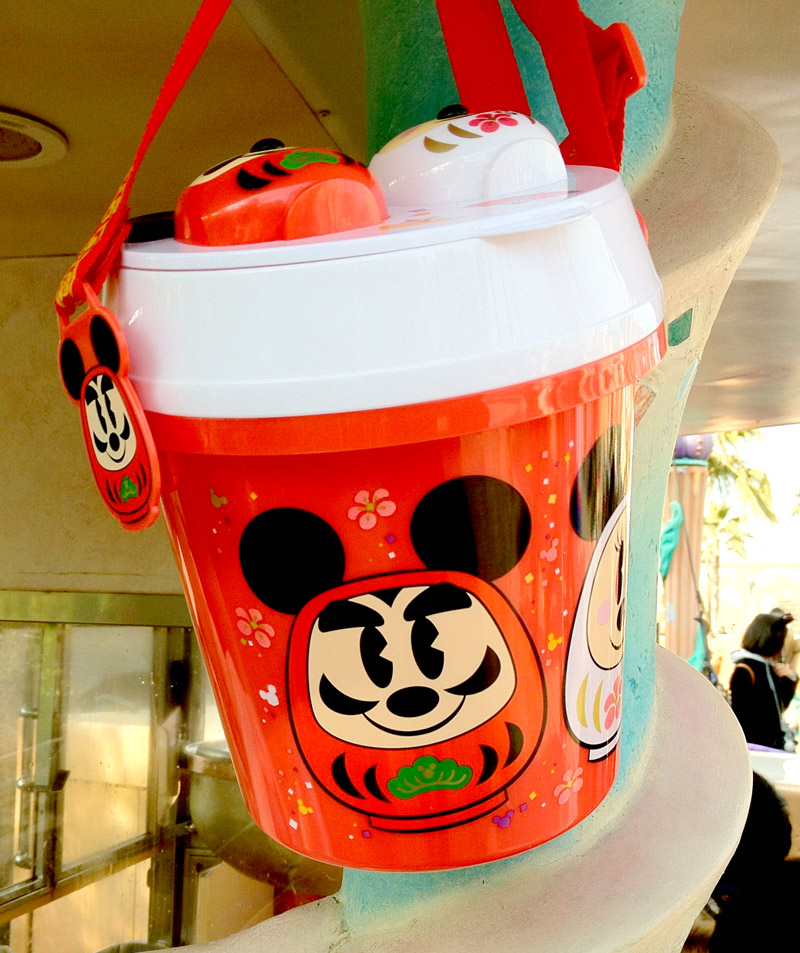
The Japanese Nengajo
Every year in December, the Japanese begin writing out their nengajo (年賀状). A “nengajo” is essentially just a New Years card though it’s a major aspect of Japanese culture and responsibility. Both businesses and individuals design, print and distribute these cards at year-end in order to be delivered on January 1st. The tradition is, if you receive one, you have to send one back the following year.
To many, the nengajo is an un-stated burden as it’s time-consuming (hand-written messages and address information), costs money for paper, printing and delivery. When you’ve got a mailing list of over 50 people (as most families do), it can be quite the time investment. On top of that, many individuals take it upon themselves to design the front of the card and print it on the traditional nengajo card stock.
The format of the card is essentially just a western-style postcard in vertical format.
Below are a few examples of Disney’s version of the nengajo. You’ll recognize (as mentioned above) the daruma design has been incorporated here as well!
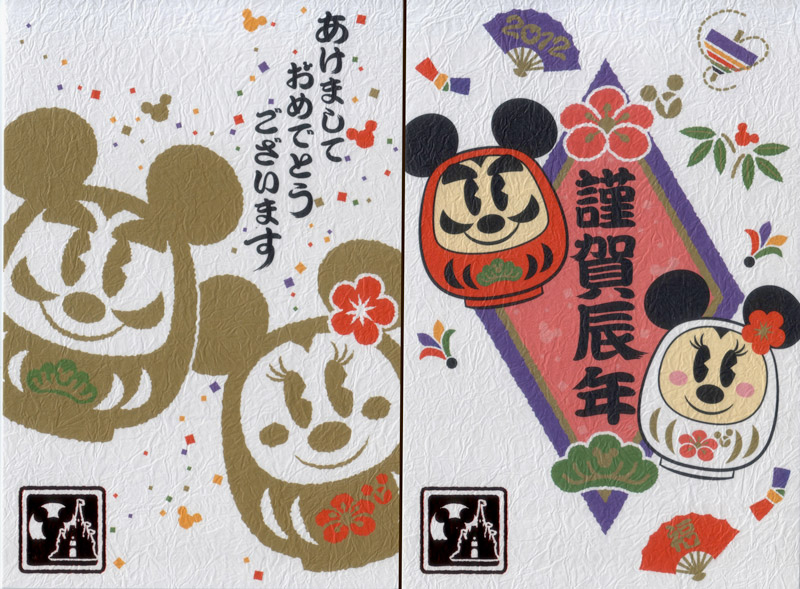
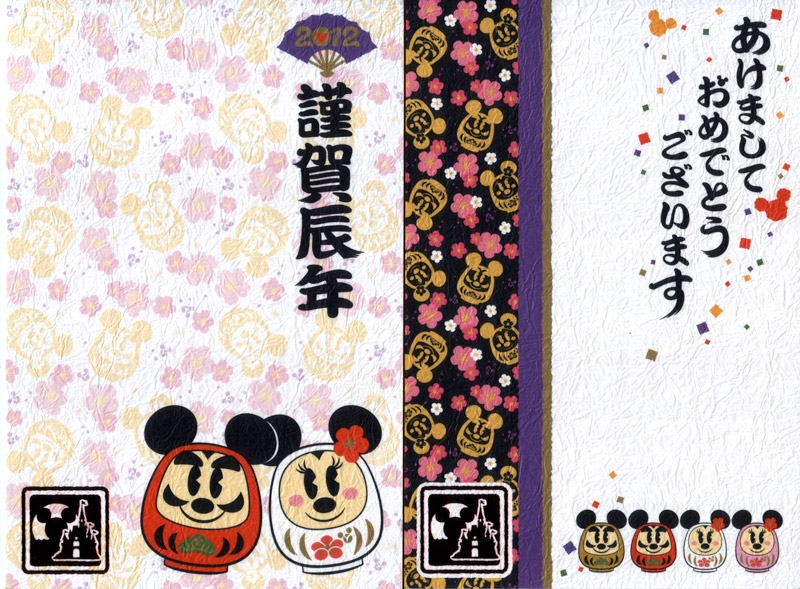
A Few Extra Goodies
The following are a few other Japanese-influenced Disney designs that I thought you all might enjoy looking at.
Cherry Blossom Minnie Stationery Set
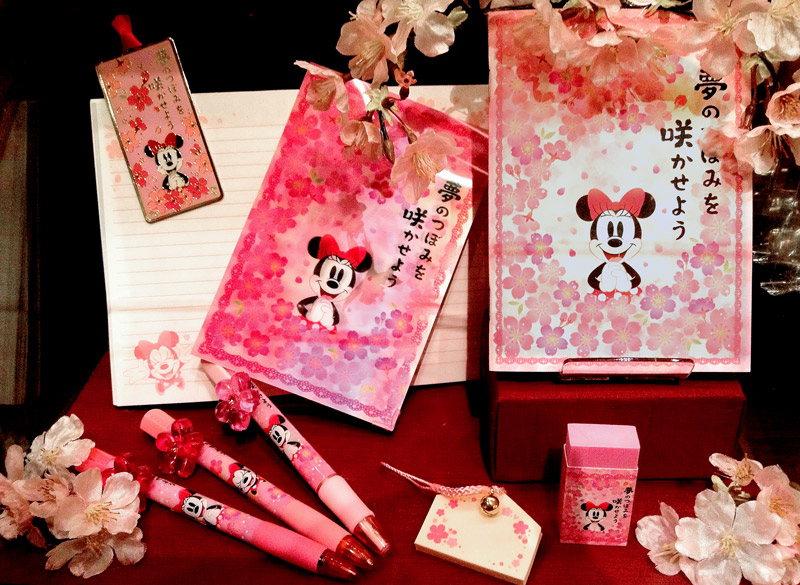
Cherry blossoms are a huge part of the Spring season here in Japan. For some more info or cherry blossom art, check out this article all about it!
Kimono-clad Minnie Mouse
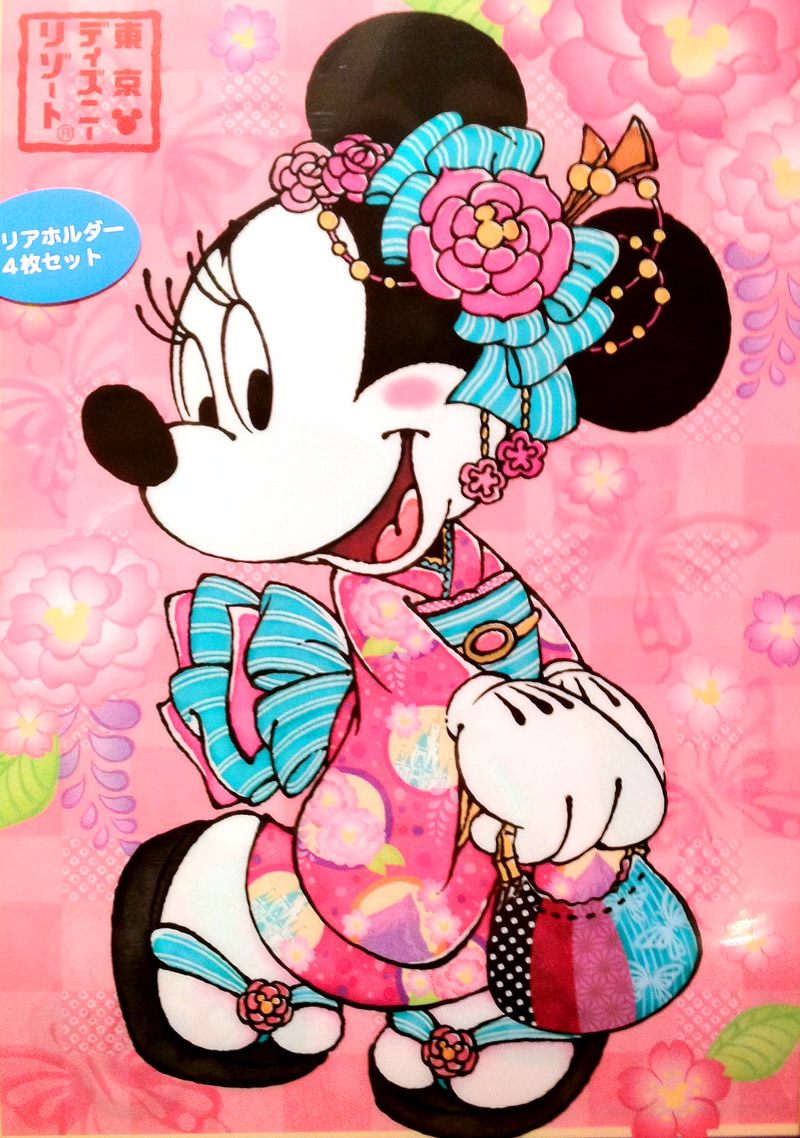
Japan Disney Stickers
You couldn’t cram more Japanese culture into this tight a space if you wanted to! Complete with traditional snacks, clothing, toys, hobbies, accessories, Japanese writing, even origami. Can you find elements of each?
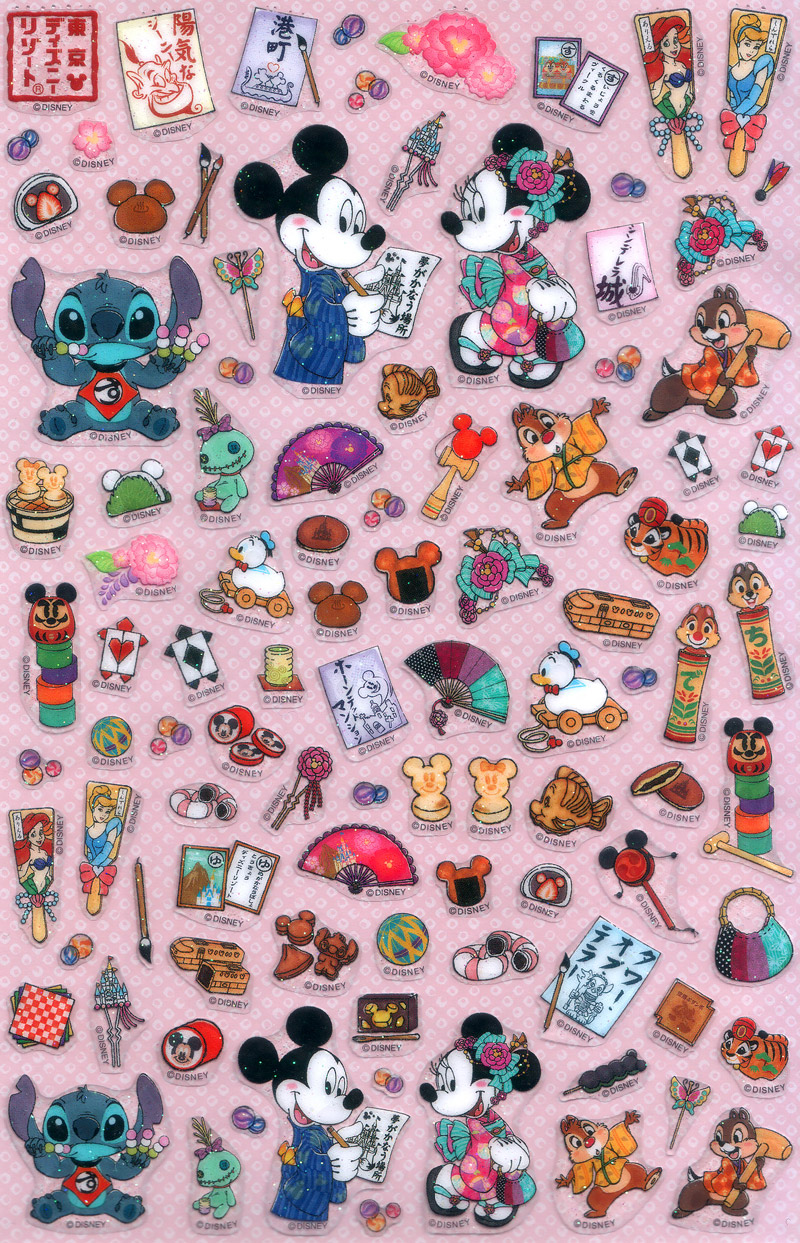
Oh! One Last Thing!
There’s one last thing that represents a huge aspect of Japanese culture. This luxury isn’t available at Disneyland but at DisneySea, there are no restrictions on an adult’s enjoyment of…
Beer!
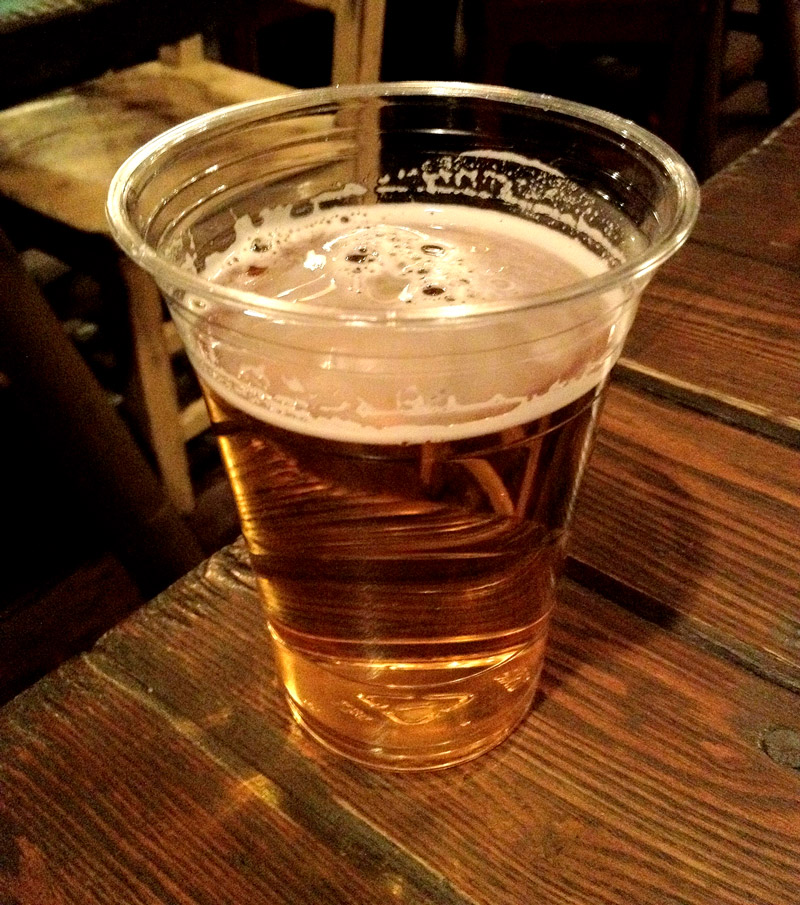
I didn’t grab a photo of the beer outdoors but there were plenty of stands selling it and patrons walking around with a glass in their hand.
Some Facts about Tokyo Disney Resort (Disneyland and DisneySea)
- Tokyo Disneyland was opened on April 15, 1983
- Tokyo Disneyland (as of this article) is the third most popular amusement park in the world
- Tokyo DisneySea was opened in 2001.
- The Disney Resort in Tokyo use enough energy to power almost 60,000 homes
- The whole of Tokyo Disney Resort closed for a month after the East Japan Earthquake in March of 2011.
- To date, Japan’s Disneyland and DisneySea are the only Disney amusement parks not owned by The Walt Disney Company.
- DisneySea is the most expensive theme park ever built ($4 billion).